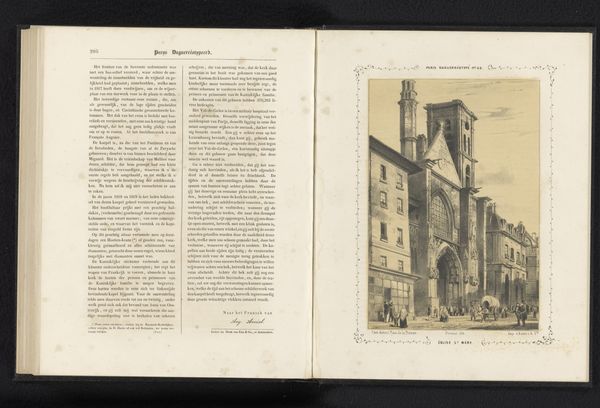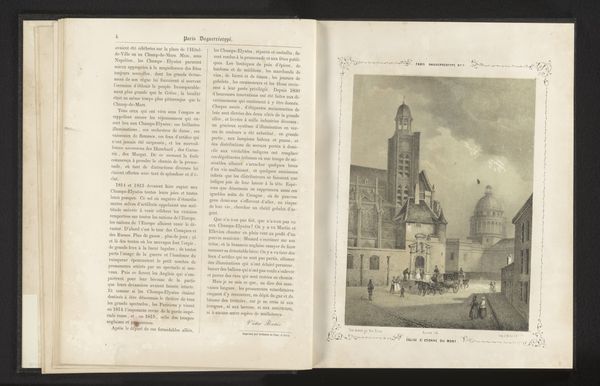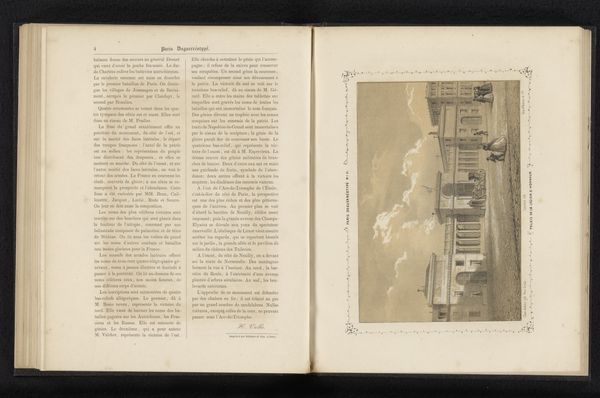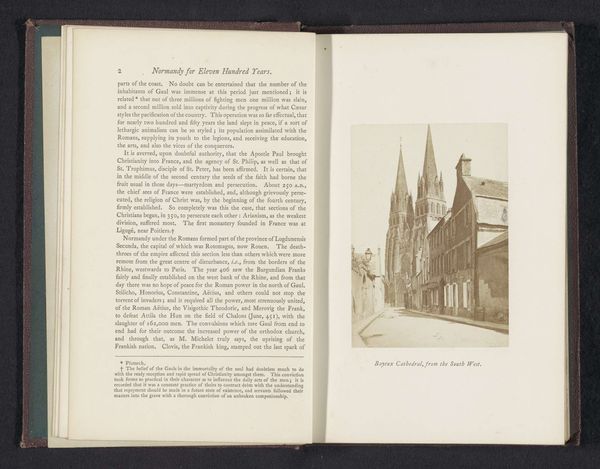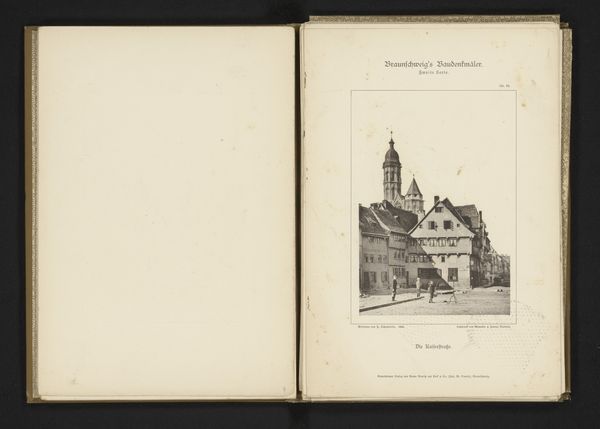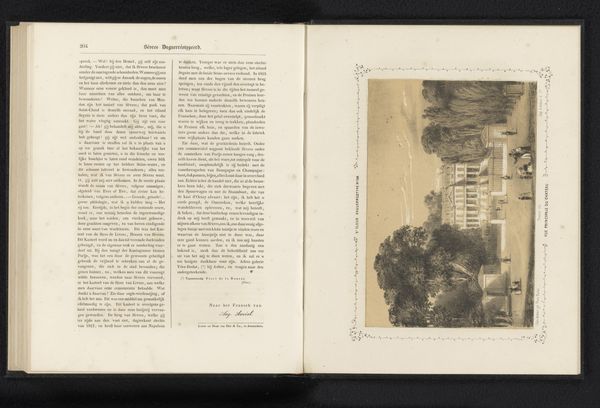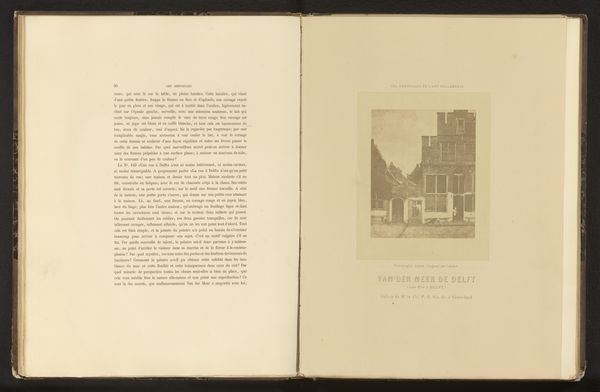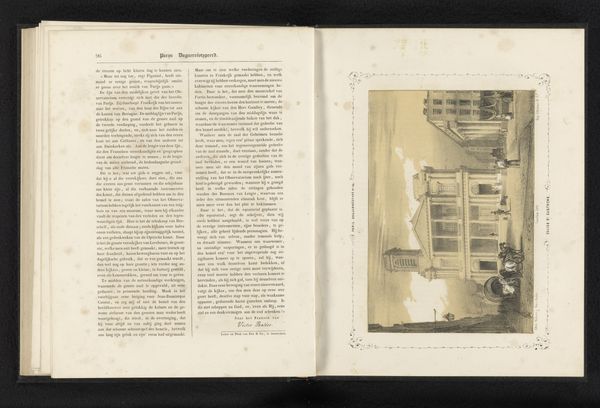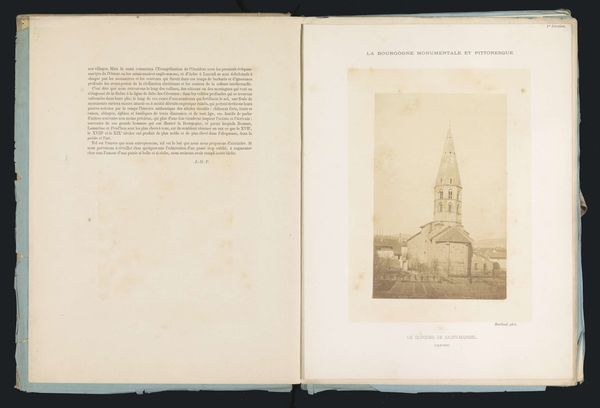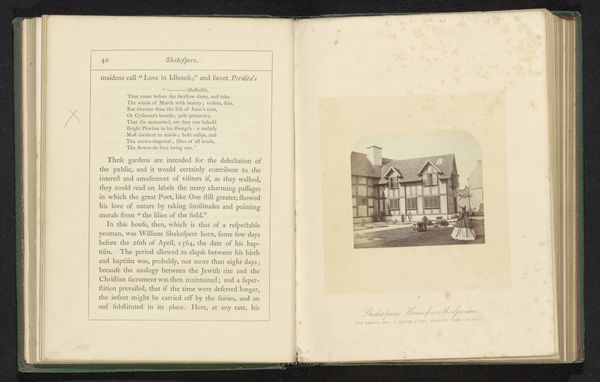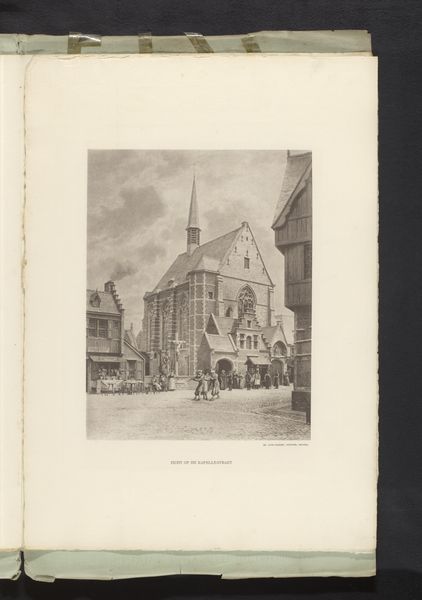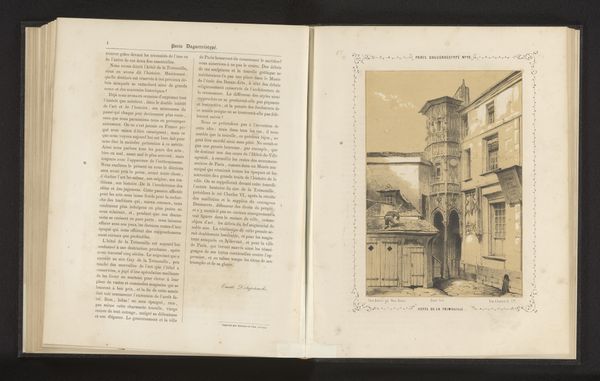
drawing, print, paper, engraving, architecture
#
drawing
# print
#
landscape
#
paper
#
romanticism
#
cityscape
#
engraving
#
architecture
Dimensions: height 260 mm, width 210 mm
Copyright: Rijks Museum: Open Domain
Curator: Let’s turn our attention to this engraving predating 1840. Titled '\u00c9glise Saint-Germain-des-Pr\u00e9s in Parijs,' it captures the Saint-Germain-des-Pr\u00e9s church, a prominent landmark in Paris. Editor: It's quite striking. I’m drawn to how the artist used light and shadow to emphasize the church's height and the bustle of Parisian life happening at its base. The way people are rendered as smaller figures in comparison makes the building feel both grand and imposing. Curator: Exactly. The print showcases an urban scene, skillfully embedding architecture within the narrative of city life, representative of Romanticism's interest in integrating humanity with its environment. How do you think the setting contributes to this representation? Editor: It makes the artwork more relatable. I mean, beyond its aesthetic value, we're also seeing a depiction of the public space surrounding the church. This was a gathering point, a nexus of social and political life, likely impacted by the major events that would define 19th-century France. It subtly asks who had access to this space and how power dynamics were displayed. Curator: I agree, and it highlights how artistic representations of public spaces serve as documents reflecting evolving social orders. Notice how the engraving technique—lines, cross-hatching—allows for capturing minute details that reflect that complexity. It’s far more than just documentation; it becomes a carrier for meaning. Editor: Yes, the very choice of this subject is itself an act, putting the church—an institution—in the frame of analysis and implying certain structures of power worth exploring, if not contesting. Even if subtly. The image becomes an implicit statement about faith, authority, and urban society. Curator: Absolutely, and it offers a window into Parisian society prior to the large-scale urban transformations undertaken later in the 19th century, placing this specific view within a context of rapid change and cultural redefinition. Editor: Precisely. Looking at this, I am struck by how it calls us to reconsider familiar symbols, institutions, and spaces that shape both our history and our contemporary lives. Curator: And in examining its representation, we are ultimately invited to think critically about the visual narratives we inherit and perpetuate.
Comments
No comments
Be the first to comment and join the conversation on the ultimate creative platform.
